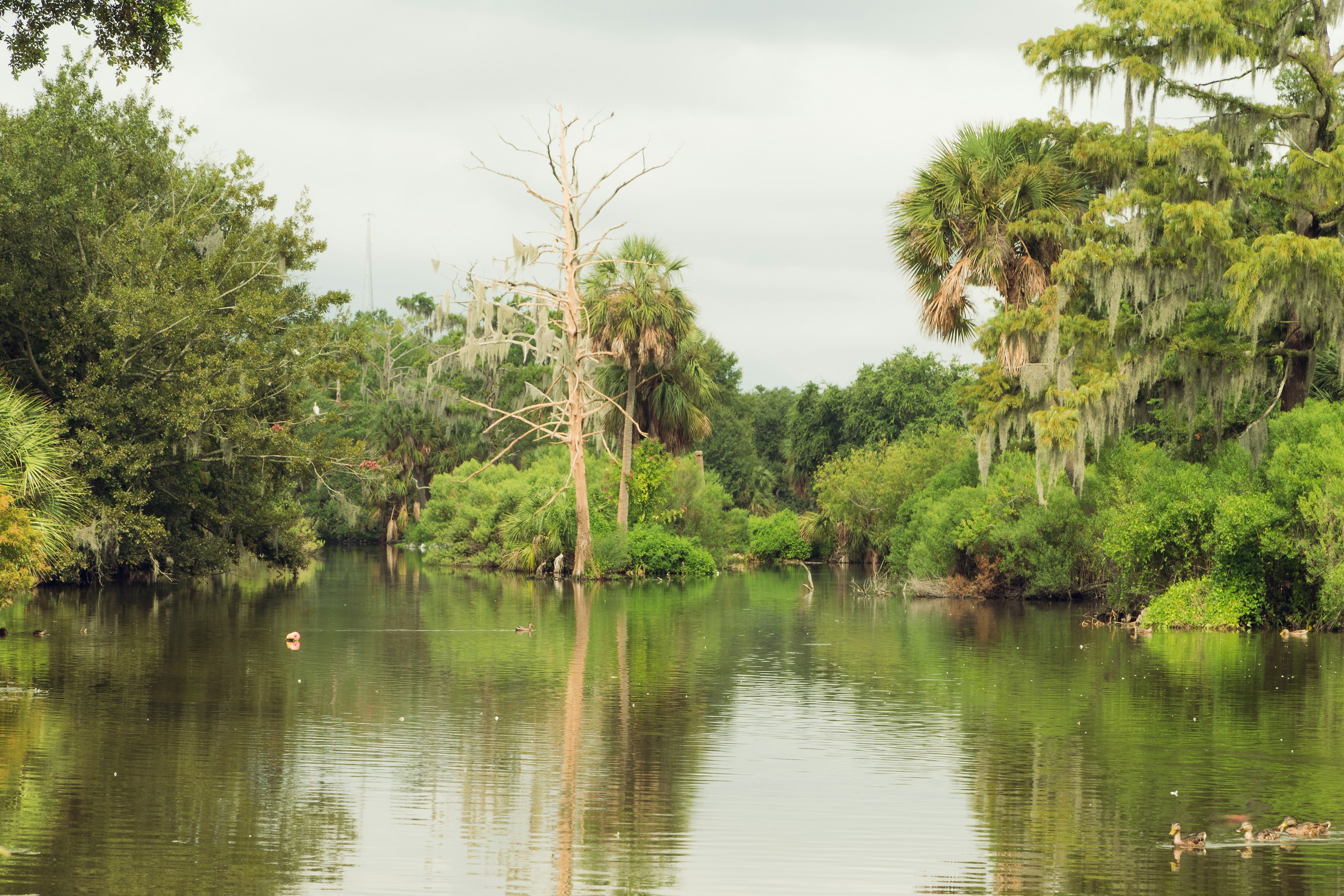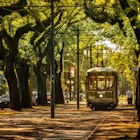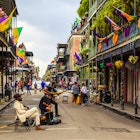
Nov 21, 2024 • 6 min read

From ferris wheels to train rides, walks through the wetlands and hikes through forests, New Orleans has some amazing parks © Paul S. Wolf / Shutterstock
New Orleans may be known for its bustling French and African American culture, vibrant music scene and over-the-top Mardi Gras floats, but it's also a diverse natural wonder, complete with wetlands, forests and ancient oaks.
The sidewalks are literally hewn into fragments by the bursting roots of local trees. And in the 18th and 19th centuries, the French were dedicated to the civic idea of a city with green lungs. It's thus no surprise that this city is riddled with parks and little green spaces. Nothing eases you out of the urban jungle like stepping into a real jungle. Here's a look at some of the best parks the city has to offer.
Editor's note: during COVID-19 there are restrictions on travel and opening hours may vary. Check the latest guidance in New Orleans before planning a trip, and always follow local health advice.
Out in New Orleans East, Audubon has opened a nature center aimed at teaching kids (and their parents) about the wetlands and forests of South Louisiana. A 4000-square foot interpretive center has displays on swamp flora and fauna, while several trails (ranging from 0.3 to 1.3 mile loops), both boardwalk and dirt, meander through lush Louisiana forest and wetland ecosystems.

Audubon Park boasts a great green lawn overhung by live oak trees in Uptown. One of our favorite spots for river-watching, the Fly, is located here. At the Fly, you can stroll along the riverside while kids play and pets poke around the trees.
20 free things to do in New Orleans

This coffee-black waterway is one of the nicest places for a stroll in the city.
In contrast to the Mississippi River, which is big and busy, Bayou St John is a quiet, rustic, yet aquatic escape located smack in the middle of the city. This winding waterway once served as a riverine highway across the swamps, but today it's a spot to walk your dog, take a romantic stroll, have a breeze-blown picnic and just generally escape from the urban jungle.

City Park is an enormous park full of Louisiana's natural surprises. Three miles long and one mile wide, dotted with gardens, waterways and bridges and home to a captivating art museum, City Park is bigger than Central Park in New York City, and it's New Orleans’ prettiest green space.
In many ways City Park is a near-perfect expression of a local “park,” in the sense that it is an only slightly tamed expression of the forest and Louisiana wetlands (Bayou Metairie runs through the grounds) that are the natural backdrop of the city.
The park occupies the site of the former Allard Plantation; much of the infrastructure and improvements, including pathways, bridges and art deco flair, were built by the Works Progress Administration (WPA) during the Great Depression. The arboreal life is magnificent and includes strands of mature live oaks – thousands of them, some as old as 600 years – along with bald cypresses, Southern magnolias and other species.
Art- and nature-lovers may want to check out the stately New Orleans Museum of Art, which spotlights regional and American artists. From there, stroll past the whimsical creations in the Sydney & Walda Besthoff Sculpture Garden, then check out the lush Botanical Gardens.
Kids in tow? Hop the rides at the Carousel Gardens Amusement Park or climb the fantastical statuary inside Storyland.

Outside of New Orleans East, Couturie is the wildest natural space in the city. A series of paths wind through acres of Louisiana hardwood forest and lead to the highest point in the city: Laborde Mountain, towering at 43 feet over the surrounding park.

This waterfront park is our favorite spot in the city for taking in the Mississippi. Enter over the enormous arch at Piety and Chartres Streets, or at the steps at Marigny and N Peters Streets, and watch the fog blanket the nearby skyline. A promenade meanders past an angular metal-and-concrete conceptual "wharf" (placed next to the burned remains of the former commercial wharf). A dog park is located near the Mazant Street entrance.
On Wednesdays, a farmers market takes place at the Piety Street entrance from 3-7 pm.

This 2.6-mile green corridor connects the Tremé to City Park via Bayou St John, traversing the length of the Tremé and Mid-City along the way. It's a bicycle- and pedestrian-friendly trail that follows the course of one of the city's oldest transportation paths – this was originally a canal and, later, a railroad.
Over the years, the railroad right-of-way became decrepit; it is hoped the thoughtfully landscaped Greenway will reverse the legacies of that blight. The trail includes a raised asphalt path, energy-efficient trail lighting and wheelchair-accessible curb ramps. Although the Greenway is well lit, exercise caution late at night.

In Louis Armstrong Park, Congo Square was a Sunday gathering spot for enslaved Africans under the French Code Noir. For one day of the week, they could sing the songs and practice the cultural traditions of their ancestral home. This was the groundwork of a uniquely New Orleanian link to the continent of Africa, and much of the city's most iconic food, music and culture has been built on that foundation.
Today, Congo Square is marked by a few stylized statues and sculptures of the city's musical heritage and heroes. The space is also a major jumping-off point for protest marches, rallies and Second Lines.

Every fourth Sunday of the month, the Arts Council of New Orleans puts on the Arts Market of New Orleans, an excellent juried arts market at Palmer Park, located just off of Carrollton Ave. There you’ll find some of the city’s local creative talent, as well as kid-friendly music and activities.

This little green sliver in the Lower 9th Ward map is a developing green infrastructure project that both holds excess water and provides a natural breath of fresh air in the midst of the city.
The 1.5-acre park is peppered with ponds, native tupelo and bald cypress trees and attractive landscaping. Wetland birds and an alligator have taken up residence, perhaps awaiting the time the park expands into a planned 42-acre natural reserve.
First time Mardi Gras: top tips for New Orleans' biggest party
Find vegan and vegetarian fare at New Orleans restaurants
Where to find New Orleans' authentic art and culture scene


Nov 21, 2024 • 6 min read




Sep 9, 2024 • 5 min read



